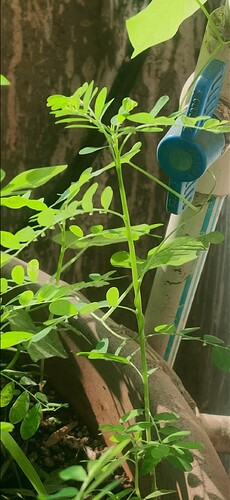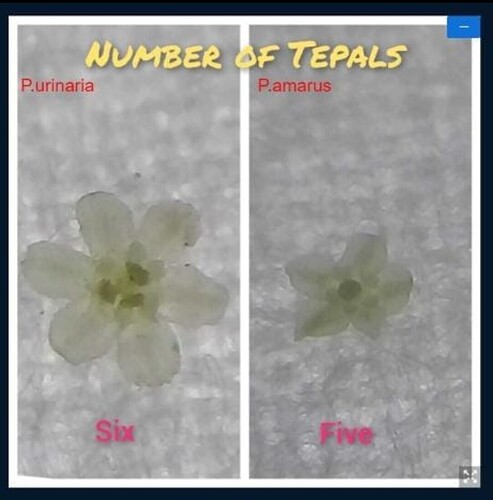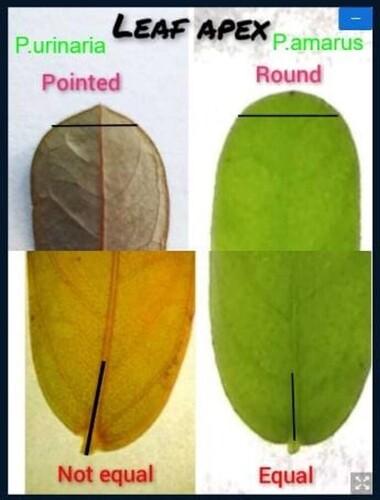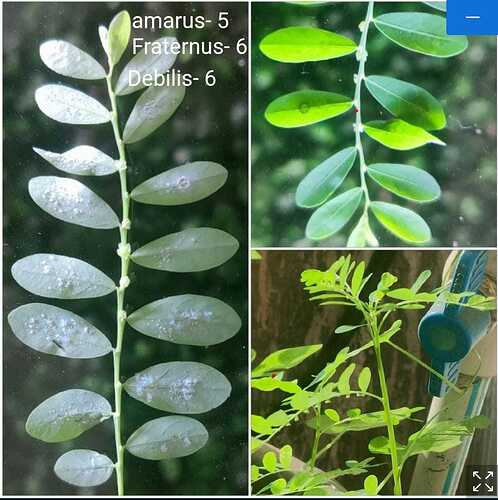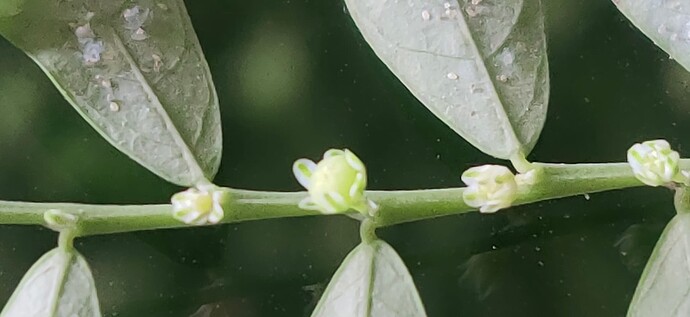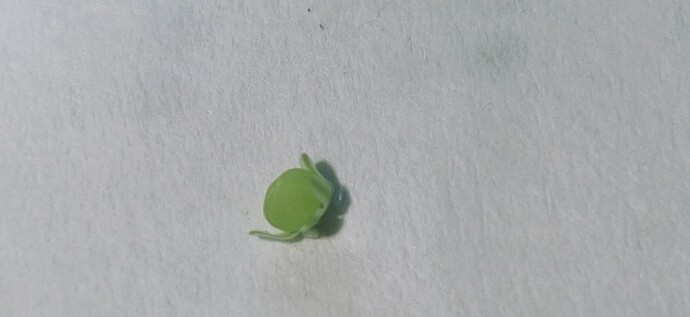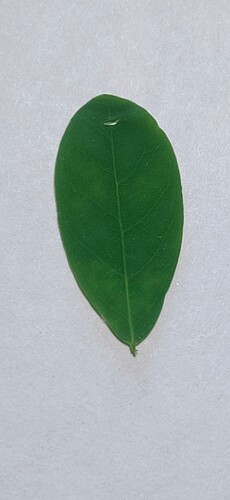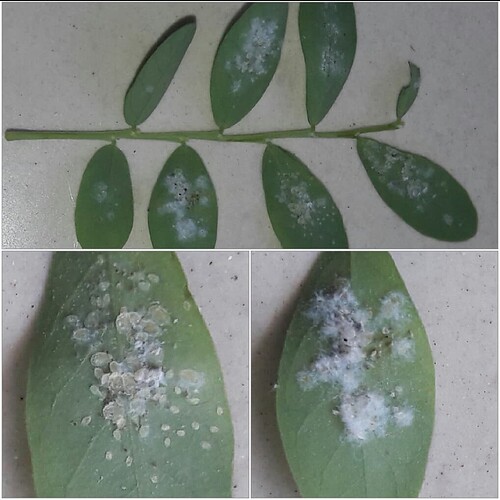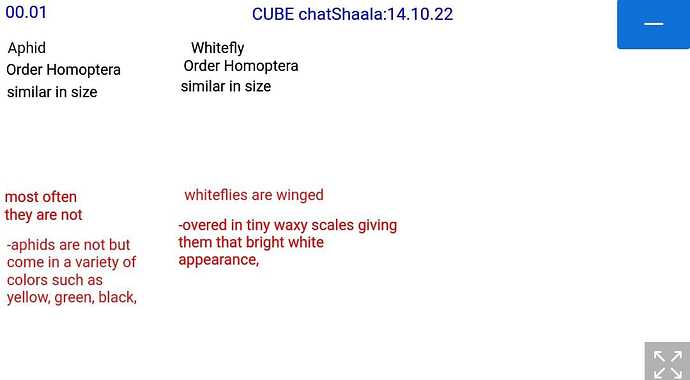Cube chaatshalala discussion 13/10/22
I found phyllantus plant at my home . Reason why I thought it was phyllantus is - arrangement of branch and position on flower ( below leaves / toward ground)
Phyllantus was compared with gooseberry plant which I thought is a shrub …we then proceeded to differentiate between herbs shrubs and tree
I tried to identify my phyllantus species with Google lens and it showed up as P.urinaria and P.niruri
@Theertha told us about the reference @Lakshmy had sent wrt to controversy with the P.niruri species… reliability of Google lens was questioned as it shows results of all possible plants that look similar to the pic searched.
Hence we must know the characterization of plant to be able to identify the species
@Theertha and @Lakshmy explained the approach to do so which included
- the leaf shape -apex and base
- the surface of fruit
- the no of tepals
- cross-section of stem
Using the comparison we tried to identify the phyllantus species of seema
Using phyllantus we can learn taxanomy , avail medicinal benefits,We can study the sleepwake cycle ,which @Lakshmy explained, can be useful indicator weather ,sunrise-sunset , we can also study the influence of light
This was the phyllantus plant i found at my home
Location:thane
Date: 10/10/22
Name : Ichha shah
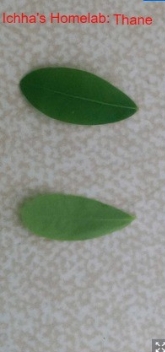
This is the pic of phyllantus leaves from my home
round apex with tapering base seen…hence can be P.Fraternus
Differentiation of p.urinaria and P amarus by teplals
6 tepals and 5 tepals respectively observed
Differentiation of p urinaria and p.amarus leaf shape … urinaria has a pointed apex whereas amarus has a rounded apex and base
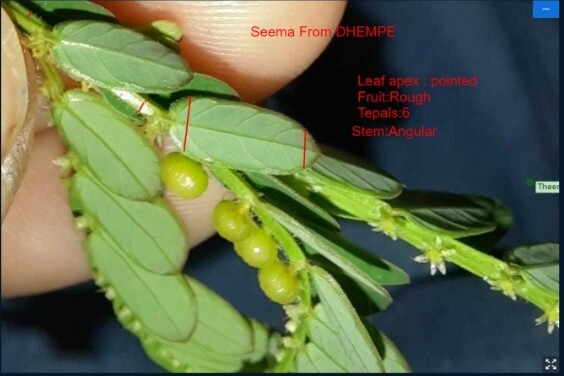
@Seema We discussed about the phyllanthus plant that was found at Dhempe Collage campus…
The phyllanthus plant belongs to urnaria species…
![]() HOW DID WE IDENTIFY IT AS PHYLLANTHUS URINARIA??
HOW DID WE IDENTIFY IT AS PHYLLANTHUS URINARIA??
We identify the species by looking at its morphological characteristics…
• Phyllanthus Urinaria has pointed leaf apex
•Phyllanthus urinaria flower has 6 tepals
•the fruit surface is rough…
•it has equal leaf bases…
• The stem seems to be angular…
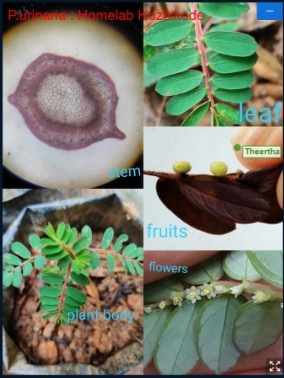
@Theertha explained features to observe to identify a phyllantus species…this is a picture of p.urinaria by @Theertha angular stem cross section, pointed leaf apex, rough fruit surface , 6 tepals observed
i noticed a phyllanthus plant in my home on 10/10/22
This is the closeup of a branch of that plant
Observation : weak green stem, pinnate leaf arrangement , flower and fruit on lower side of leaf rachis
Location: thane
Date: 14/10/22
Time 9:10
Name : Ichha shah
This is the Enlarged image of the Tepals visible on my the phyllanthus plant
Count : 6 tepals
Location: thane
Date: 14/10/22
Time 9:10
Name : Ichha shah
This is the Enlarged image of the fruit of phyllanthus
Observation :smooth and round surface
Location: thane
Date: 14/10/22
Time 9:10
Name : Ichha shah
This is the Enlarged image of the leaf of phyllanthus
Observation : round apex and tappering base
Location: thane
Date: 14/10/22
Time 9:10
Name : Ichha shah
From the observations made i think that the plant i found is Phyllanthus fraternus
https://www.flowersofindia.net/catalog/slides/Gulf%20Leaf-Flower.html
This is the infection seen on majority of leaves of my phyllanthus plant
Observation : oval egg like structure and a granular cotton like appearance seen
Is it aphid or fungus??
https://agritech.tnau.ac.in/crop_protection/crop_prot_crop_insect_medi_Keela.html
https://images.app.goo.gl/A7eS9eVviTTZ167s7
Location :thane
Date: 14/10/22
Time: 12:55
Name : ichha shah
Cube chaatshalala discussion 14/10/22
Discussion started of in the search to identify the infection causing organism on my phyllantus plant. Is a fungi ? Aphid ? White fly ?
According to the reference shared …it seemed to be white fly as it had a creamish white egg apperance unlike aphid which r colored
https://agritech.tnau.ac.in/crop_protection/crop_prot_crop_insect_medi_Keela.html
We also tried to identify my phyllantus species… according to me it’s P.fraternus
https://www.flowersofindia.net/catalog/slides/Gulf%20Leaf-Flower.html
We tried to rule out possibility of it being p.urinaria ( by leaf apex) and p amarus (by no of tepals)
An interesting questions was whether or not we can consider the color of tepal as a characteristic to differentiate
My phyllantus had 6tepal each having a long greenish line
But according to @Theertha it is P.debilis ![]() …
…
@Lakshmy and @Theertha shared refrences to help identify phyllantus species
@Lakshmy shared the research paper titled " SYSTEMATIC STUDIES IN HERBACEOUS PHYLLANTHUS SPP.(REGION:TIRUCHIRAPPALLI DISTRICT IN INDIA) AND A SIMPLE KEY TO AUTHENTICATE ‘BHUMYAMALAKI’ COMPLEX MEMBERS"
there was mentioning of SCAR analysis for validating identity of phyllantus
What is SCAR??
sequence characterized amplified regions i.e. SCAR markers Are derived from RAPD (DNA fragments from PCR amplification of random segments of genomic DNA with single primer of arbitrary nucleotide sequence )
PCR req dna —How do we extract the dna ?
I briefly explained an experiment i had done in college ie extraction of plasmid from bacteria using alkaline lysis method using SDS (detergent) + NaOH which to solubilize the lipid bilayer membrane along with other chemicals
Can we extract dna from plant , animal cell by same method? Can we do it for moina?
